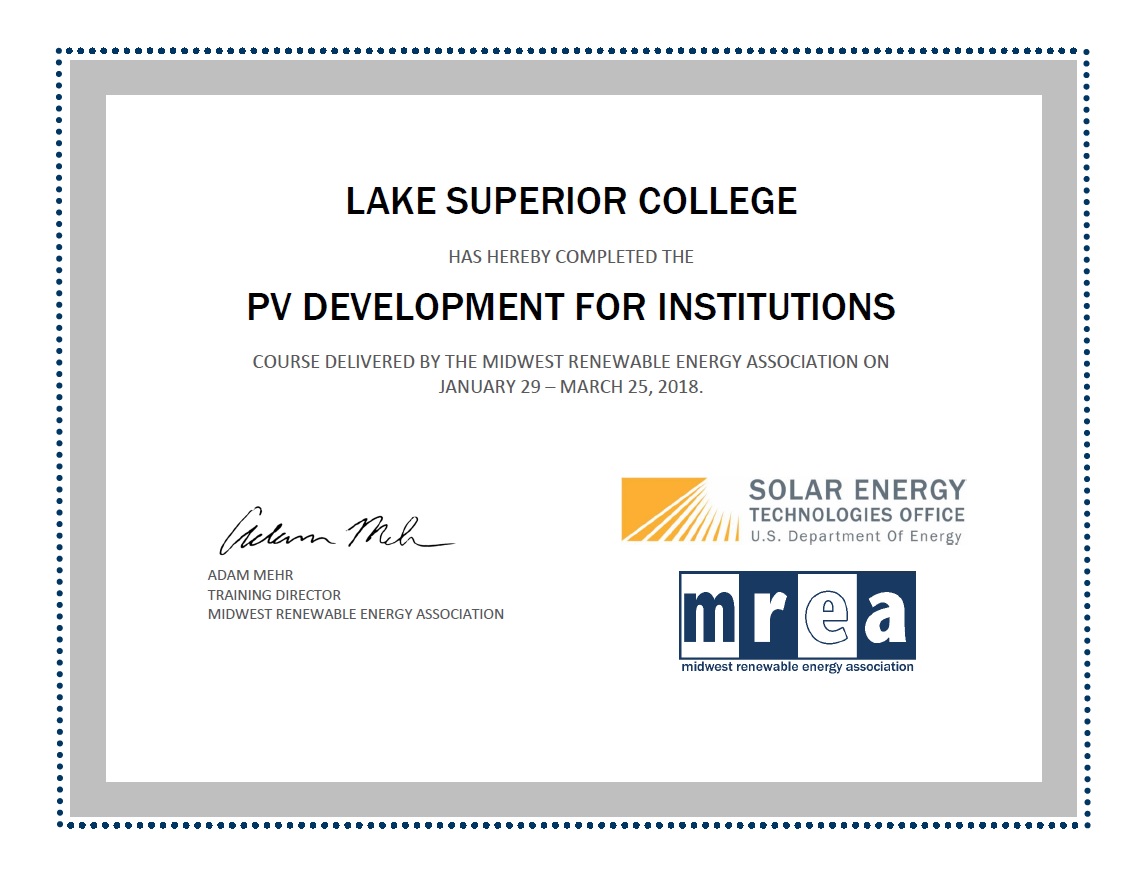LSC on Solar
In early 2018, Lake Superior College applied for and was chosen to participate in Midwest Renewable Energy Associations’s (MREA) first 8-week PV Deployment for Institutions course along with 13 other higher education teams. The PV Deployment course was developed with support from the U.S. Department of Energy Solar Energy Technologies Office. More information about the course, including a list of participants, can be found at MREA’s news page (midwestrenew.org).
 For this course, LSC’s newly formed “Solar Team” included the Vice President of Administration, Renewable Energy and Commercial & Residential Wiring faculty, and our campus Sustainability Coordinator. Over 8 weeks, building on the results of our 2017 National Renewable Energy Laboratory (NREL) solar feasibility analysis, the team created a draft Solar Power Roadmap for our own solar deployment. The team used resourced developed and compiled by MREA to model various solar deployment scenarios and consider not only the financial value of this renewable energy for the campus, but also consider the non-financial and indirect values of going solar.
For this course, LSC’s newly formed “Solar Team” included the Vice President of Administration, Renewable Energy and Commercial & Residential Wiring faculty, and our campus Sustainability Coordinator. Over 8 weeks, building on the results of our 2017 National Renewable Energy Laboratory (NREL) solar feasibility analysis, the team created a draft Solar Power Roadmap for our own solar deployment. The team used resourced developed and compiled by MREA to model various solar deployment scenarios and consider not only the financial value of this renewable energy for the campus, but also consider the non-financial and indirect values of going solar.
In addition to “crunching numbers”, the MREA course prompted the team to dig deeper into local, state and larger considerations related to solar deployment. The team identified stakeholder engagement opportunities, identified relevant legal considerations, analyzed landscape and building-specific solar insolation potential, discussed various financing models, and finally heard from a number of developers and practitioners about pitfalls and tips for running a successful project – from planning to bid to implementation.
By assessing our own energy consumption patterns and using the solar modeling tools and resources used in the renewable energy industry, we now have a much better understanding of what’s possible, what’s probable, and perhaps most importantly, what simply won’t work for us. LSC’s Sustainability Council will continue to refine its Solar Power Roadmap as the campus moves toward achieving its carbon reduction and workforce training goals.
Posted in: Uncategorized
Leave a Comment (0) ↓